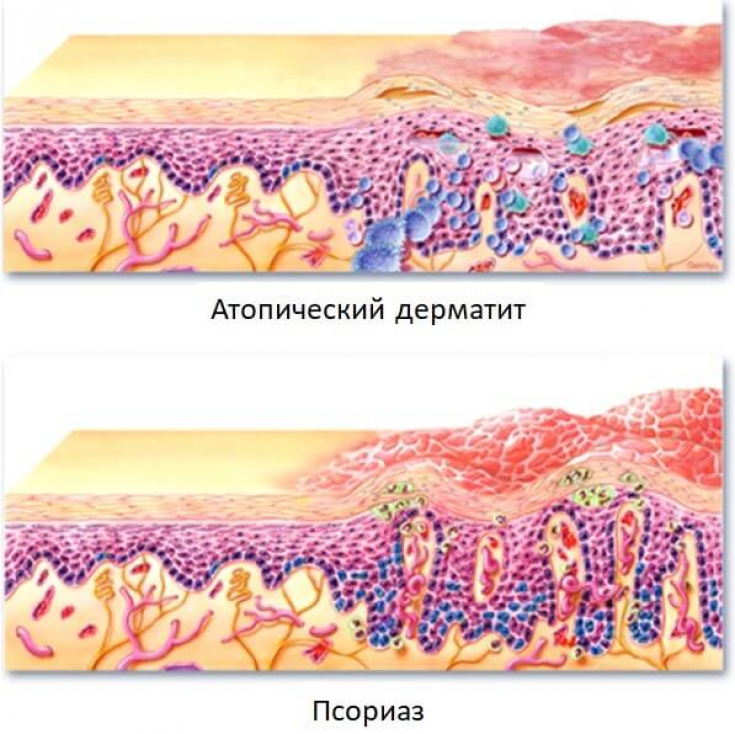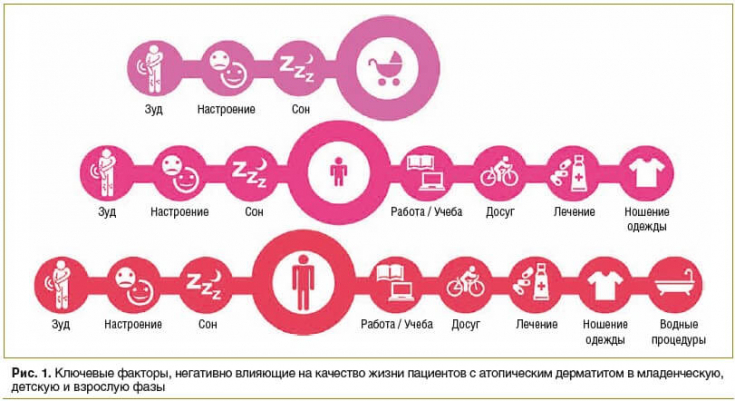Treatment of allergic diseases in children − It is a complex matter, the success of which depends not only on the professional qualities of the doctor. The fruitful cooperation of parents and doctors is of utmost importance, because only under this condition can the desired effect be achieved.
Until recently, active discussions continued on the topic of who should treat a child with atopic dermatitis: a dermatologist, an allergist or a pediatrician? Read more about organization of rational skin care in children with atopic dermatitis at estet-portal.com.
- Peculiarities of managing patients with atopic dermatitis
- Atopic dermatitis in older children
- Topical hormonal therapy for atopic dermatitis in childrenher
Peculiarities of managing patients with atopic dermatitis
A special place in the management of patients with atopic dermatitis is occupied by rational organization of care.
First of all, the attention of parents should be paid to the safety of underwear (cotton fabrics), its washing without the use of modern "children's" clothes. detergents, preferring neutral detergents, long rinsing and soaking in cold water (approximately 2 hours), which significantly reduces the contact of chemicals with the child's skin in the future.
If itching is severe, the length of the child's nails should be monitored to prevent skin injury and possible infection.
It is very important to conduct hygienic (and/or therapeutic) baths, however, cases of inadequate implementation, in particular, require a targeted selection of the composition of the bath. After taking a bath, the skin is in no case wiped, but by wrapping the child in a sheet, they allow it to dry on its own.
Follow us on Instagram!
Determining the composition of the therapeutic bath and local therapy in general, the doctor takes into account the fact that the skin in childhood has extremely important functions (metabolic, respiratory, synthesizing, protective), which largely depend from anatomical and physiological features.
Why does the skin itch: features of the diagnosis and treatment of itching
Therefore, in case of atopic dermatitis with exudation, it is advisable to use decoctions:
Atopic dermatitis in older children
In children 2 years of age and older, atopic dermatitis is mainly accompanied by increased dryness, flaking, hyperkeratosis, which require selective topical application of herbal decoctions.
Skin changes are proof of chronic allergic inflammation, which is stopped by the use of hygienic baths, primarily with herbal decoctions that have anti-inflammatory effects (tricolor violet, oregano, chamomile, birch, flax seeds).

The management of atopic dermatitis regardless of age involves a combination of rational skin care and targeted topical therapy.
A modern wide range of finished pharmaceutical forms of medicines significantly expands the possibilities of local treatment. However, the nature and area of the skin lesion.
For example, exacerbation may be accompanied by weeping, therefore, aerosols, lotions are used; if there are no signs of exudation, then, despite the above forms, water talkers, creams / pastes, powders .
are also prescribedModern approaches to the prevention and treatment of xerosis in children
Severe dryness of the skin in atopic dermatitis brings the child particularly unpleasant sensations:
- itching;
- excitement;
- restless sleep;
- risk of secondary infection of multiple scratches.
In order to eliminate them, it is desirable to use emollients, therapeutic shower gels, soap, which can not only cleanse, but also nourish the upper layers of the skin, improve its elasticity, increase regenerative and protective properties.
Topical hormonal therapy for atopic dermatitis in children
The measured application of topical therapy is a significant step towards achieving clinical remission. It was mentioned above that it is the nature of skin changes (papules, vesicles, erosions, severe lichenification) that affects the choice of remedy (cream, ointment, emulsion, lotions) and its composition .

There is a group of children in whom traditional local preparations in combination with systemic therapy do not lead to a sustainable improvement in well-being. And therefore, despite the special warnings of pediatricians about the use of local corticosteroids, there are cases when it is impossible to achieve a therapeutic effect without them.
Development triggers, diagnosis and treatment of contact dermatitis
Of course, a more gentle way of managing the pathology is preferable, therefore the use of non-steroidal drugs for the treatment of atopic dermatitis is evidence of high professionalism, which consists in observing special methods of treating children − individuals in whom functional and intersystem connections are formed during the entire period of childhood and require compliance with the natural pace of development.
Immunological aspects of the development of atopic dermatitis
It is precisely for these reasons that in cases where there are real indications for the local use of steroid drugs, and such measures should be resorted to, it is first necessary to determine:
- area (area) of possible application;
- duration;
- assignment mode;
- active substance and its bioavailability.
In general, preference is given to drugs that have the lowest percentage of bioavailability (mometasone furoate 0.4% (cream), 0.7% (ointment)), while for hydrocortisone the concentration is 1- 3%, and in case of inflammatory reactions of the skin − concentration is doubled.
More useful and interesting information on our channel on YouTube:







Add a comment